The king of Korean Home Food “ Kimchi Fried Rice (Bokeumbap)” Recipes
Kimchi Fried Rice (Bokeumbap) is humble food that is mostly enjoyed at home, but you might also see it in some casual Korean eateries. At home, it’s a great way to use leftover kimchi that’s a bit past its prime. Quick, easy, and cheap to make, kimchi bokeumbap is simple Korean home cooking at its best.
Prep Time: 5 minutes
Cook Time: 15 minutes
Total Time: 20 minutes
Ingredients:
- 1 cup kimchi, drained and chopped (preferably a bit old and sour Kimchi)
- 1/2 sweet onion, chopped
- 1 Tbsp soy sauce
- 1 Tbsp butter
- 1/3 cup thinly sliced beef/ spam/ pork/ bacon/ tuna or ham
- 3 cups cooked rice
- Salt to taste
- 1 Fried egg for each serving
Preparation:
- If using bacon, saute briefly on an ungreased large pan and omit oil from next step. With any other meat or a vegetarian version, start with step #2.
- Saute kimchi and onion in a lightly greased large pan over medium heat for a few minutes.
- When vegetables begin to look transparent, add ½ Tbsp of butter, garlic, and soy sauce and saute for another 2-3 minutes.
- Add meat or pork and continue to saute until meat is cooked.
- Turn heat off but keep pan on burner.
- Add rice and rest of butter, mixing to combine.
- Salt to taste and top with fried egg to serve.
(Serves 4)
North–South differences in the Korean language
There are a small number of differences in the standard forms of the Korean language used in the Democratic People’s Republic of Korea (North Korea; hereafter “the North”) and the Republic of Korea (South Korea; hereafter “the South”), due to the length of time Korea has been divided.
1. Letters: The same Hangeul letters are used to write the language in the North and the South. However, in the North, the stroke that distinguishes ㅌ |tʰ| from ㄷ |t| is written above rather than inside the letter as in the South.
|
Letter |
North Korean name |
South Korean name |
|
ㄱ |k| |
기윽 [kiɯk̚] | 기역 [kijʌk̚] |
|
ㄷ |t| |
디읃 [tiɯt̚] | 디귿 [tiɡɯt̚] |
|
ㅅ |s| |
시읏 [ɕiɯt̚] | 시옷 [ɕiot̚] |
|
ㄲ |k͈| |
된기윽 [tøːnɡiɯk̚] | 쌍기역 [s͈aŋɡijʌk̚] |
|
ㄸ |t͈| |
된디읃 [tøːndiɯt̚] | 쌍디귿 [s͈aŋdiɡɯt̚] |
|
ㅃ |p͈| |
된비읍 [tøːnbiɯp̚] | 쌍비읍 [s͈aŋbiɯp̚] |
|
ㅆ |s͈| |
된시읏 [tøːnɕiɯt̚] | 쌍시옷 [s͈aŋɕiot̚] |
|
ㅉ |tɕ͈| |
된지읒 [tøːndʑiɯt̚] | 쌍지읒 [s͈aŋdʑiɯt̚] |
2. Pronunciation: The standard languages in the North and the South share the same types and the same number of phonemes, but there are some differences in the actual pronunciations. The South Korean standard pronunciation is based on the dialect as spoken in Seoul, but the North Korean standard pronunciation is based on the dialect as spoken in Pyongyang.
3. Emphasis: In the North, names of leaders 김일성 (Kim Il-sung), 김정일 (Kim Jong-il) and 김정은 (Kim Jong-un) are always set off from surrounding text, typically by bolding the characters or increasing the font size.
Reference
Jochen-Martin Gutsch (2012), Germans Give Pep Talks on Korean Unification Der Spiegel .
Learning Korean from Korean T.V show
We got married! 우리 결혼했어요 (우결)
We Got Married (우리 결혼했어요) is one of the popular variety shows on MBC. The show is directed for the purpose of how couples of Korean celebrities could show what life would be like if they were married. Each week, couples are assigned missions to complete, with candid interviews of the participants to reveal their thoughts and feelings. The variety show tells you how young couples would solve the troubles of their love and marriage throughout the interesting episodes.
The show, 우리 결혼했어요, let us think of some interesting questions which everyone would have ever thought about once such as “If I were ~ or If we are” While you watch the show, you may be confused what is real or imaginary. Now, the season 4 is still going on since the first season started in 2008. In the season 4, you can enjoy exciting episodes between new couples, Jullien Kang & 윤세아, 황광희 & 한선화 (one of members of Secret), 이준 & 오연서. Nowadays, 황광희, one of the member of ZE:A, is a budding rookie in many reality variety shows.
Shall we learn Korean past tense from the show title?
The sentence, 우리 결혼했어요, means “We got married”. It is a past tense. How to say something of what you did in Korean?
Before you move on to the next step, you need to know the structure of the Korean verbs first. All Korean verbs end in –다 such as 보-다(to see, watch), 먹-다(to eat), and 공부하-다(to study). Korean verbs are divided into two parts, stem part and ending part. The ending part is always –다. In the word, 공부하다, 공부하 is a stem part and –다 is an ending part.
Korean past tense can be made with –았어요/-었어요/-했어요. Depending on the vowel in the last syllable in each verb stem, -았어요, -었어요 or –했어요 should be attached to the stem part. At this time, -다 ending part is deleted.
If the last syllable in any verb stem has a ‘ㅏ’ or ‘ㅗ’ vowel, -았어요 is added. For example, you can separate the verb 보다 (see, watch) into 보 and 다. 보-(stem part) has a ‘ㅗ’ vowel, so –았어요 is added. Then without –다, 보 is combined with –았어요. So it becomes 보-았어요. It means ‘saw’.
To another verbs has other vowels excepting ‘ㅏ’and ‘ㅗ’ in the last syllable in the stem, -었어요 is combined. For example, 먹-다 which means eat, has a ‘ㅓ’vowel in its stem. So the stem part can put together with –었어요. Finally, 먹 and –었어요 become 먹었어요 which means ate.
All verbs ending in하다 become –했어요. For example, 공부하다(study) becomes 공부했어요 (studied). As you seen the title of ‘우리 결혼했어요’, 결혼했어요 comes from the basic form ‘결혼하다 (get married)’. You can use the expression ‘-했어요’ in many ways. It means “I did something”.
저는 한국어 공부했어요. (I studied Korean/ Jeoneun hangugeo gongbuhaetsseoyo)
저는 비빔밥 먹었어요. (I ate 비빔밥/ Jeoneun bibimbop meogeotsseoyo)
저는 영화 보았어요. (I watched a movie/ Jeoneun yeounghwa boatsseoyo).
Question form is simple.
“어제 뭐 했어요?” It means “What did you do yesterday?” 어제[eoje] means “yesterday”.
You can make your own answers. 저는 어제 한국어 공부했어요. Instead of 한국어, you can put anything.
저는 (math) 공부했어요. 저는 (불고기) 먹었어요. In the bracket, you may put anything.
Ok. Just enjoy learning Korean and try to use what you learn. Thank you.
Korean teacher, Sarah Yong.
TRAVELLING to INDIA
Enigmatic! Mystical! Soul stirring! The array of emotions is overwhelming and so is the list of travel destinations in India. Taj Mahal in Agra; Khajauraho Temple of the Kama Sutra fame in Bundelkhand, Madhya Pradesh; Thar Desert in Rajasthan; Darjeeling Hill Station in West Bengal; Red Fort in Delhi; Ganges in Varanasi (Benaras), Uttar Pradesh; Elephanta Caves, 9 km away from Mumbai; stunning beaches like Palolem in Goa; Akshar Dham in Delhi; Kingdom of Dreams in Gurgaon, Delhi; Jog Falls in Sagara, Karnataka and not to mention the back waters of Kerala. The topography is diverse starting with the snow bathed Himalayas to sun drenched beaches, serene temples to boisterous bazaars, lantern-lit villages to software-savvy hubs.
While planning your trip the absolute tip is to be mindful of the weather. Clothing is best bought India. It is cheap and suits the climate and conditions. Shopping on the first day! All you should pre-purchase are bare minimums like sunscreen, a nice pair of walking shoes and a hat. Checking on the vaccination requirements with your GP will be detrimental. Food and water borne diseases are a threat. Purified or carbonated water is a good option! What about the culinary delights? All the frying, simmering, sizzling, kneading and flipping is certainly one hell of a mouth-watering ride. Wherever possible, make sure it is straight from the pan to your plate. Fresh and hot food will assure minimal chances of food contamination. So stack on to that cash/credit card/travellers’ cheques, get your visa stamped and get ready to be shaken, stirred and jolted.
One moment you will be inspired, just to turn around and be frustrated at the heavily disorganized-depending-on-God traffic, thrilled instantaneously at the whizz of the auto rickshaw, only to be confounded at the immense poverty stricken yet smiling faces. The spectrum of encounters for the traveller is mind boggling. Even experienced travellers find India a challenge at some point, yet this is all part of the India experience. Love it or loathe it – India will ignite your imagination and stir your soul anew.
Hindi Words ….Oxford Dictionary……and beyond
More than 700 Hindi and Sanskrit words have finally wriggled their way in to the Oxford! Indian words have started commanding a presence from a simple ‘curry’ in the kitchen to the ‘sahib’s’ lavish ‘bungalow.
The Oxford dictionary, ceremoniously notes all the Indian words absorbed into the English vocabulary each year. Some of the surprising (shampoo!) and not so surprising (jungle) ones are:
1. Philosophical and Spiritual terms
- Dharma – moral law.
- Guru – a teacher, guide or mentor
- Nirvana – a state of perfect happiness.
2. Social and Religious terms
- Juggernaut – an overwhelming force that crushes everything in its path.
- Pundit – a learned person.
3. Terms of Fashion
- Bandana – a large, handkerchief brightly coloured.
- Bindi – a dot marked on the forehead by Hindu wives.
- Bangle – a rigid bracelet or anklet.
- Dhoti – a loincloth worn by Hindu men in India.
- Jodhpurs – long riding breeches.
- Cummerbund – waist binding
4. Culinary Terms
- Curry – a spicy dish.
- Basmati – a type of rice.
- Ghee – clarified butter.
- Chutney – a side dish for food.
5. Others
- Bungalow – a small house.
- Loot – stolen goods.
- Chit – a note or letter.
- The Hindu
- Cheetah – long legged, African or South West Asian wild cat that can run at tremendous speed.
- Jungle – a wild tangled mass
- Shampoo – liquid or cream to wash the hair
The latest entrants are words like bhagwan – god, bhakti – devotion, bhajan-devotional song, adda-hang out, parishad-council, dicky (car boot), videshi- foreign, deshi-native. The even more recen ones are words that even an Indian would be surprised to see in the Thesaurus. I definitely was. These are colloquial words like bindaas – carefree and Hinglish – mixture of Hindi and English. Words like Hindutva and Swadeshi with political connotations have also been introduced in everyday English. Whether the Raj likes it or not but more Hindi words are being utilized in every day English lingo than the Queen could have ever thought. Ironic indeed!
DEEWALI: Festival of Lights on 30th October, Parramatta Stadium!
Deewali comes from the Sanskrit word ‘Deepavali’ which means a row of lights. This Hindu celebration is rightly called the Festival of Lights as it celebrates victory of Good over Evil and Light over Darkness. The goddess of happiness and good fortune, Lakshmi, roams the earth on this day and enters the house that is pure, clean, and bright. Deewali celebrations may vary in different communities but its significance and spiritual meaning is generally “the awareness of the inner light”.
Deepavali is celebrated in many countries around the world. A gigantic population of 30 million Indians residing away from India celebrate this festival in foreign lands with fervour and excitement. The largest groups of non-resident Indians live in the USA, Canada, Nepal, Burma, Malaysia, Singapore, United Arab Emirates (UAE), Saudi-Arabia, and South-Africa and in the United Kingdom (UK). Depending on the origin of the majority of Indians, the festival in those countries is either Diwali (most immigrants from North-India, i.e. USA/Canada/UK) or Deepavali (most immigrants from South-India such as Tamils, i.e. Malaysia/Singapore).
In Sydney, the Deewali event is a riot of fun and frolic for the whole day. The fair has
Organized firework displays.
- Food stalls with assorted Deewali sweets, savories and herbs.
- Dancing and musical performances.
- Stalls offering henna paintings.
- People burning the effigy of the demon king Ravana.
Indians love to bring out their finest wears on this special occasion. They are adorned with henna and other colourful outfits. Houses are lit with candles and lights to celebrate the festival. Christmas arrives a month before for the Indian counterpart. This year Deewali is being organized on Sunday 30 October 2011 at Parramatta Stadium, Sydney from 12 noon to 9 pm. Don’t miss out on this wonderful celebration of life, happiness and communion!
Texas State University
But Hindi? Why Not!
Are you of Hindustani ancestry, or your partner could be Hindi speaking, or you are gob smacked by the Bollywood heroes romancing the gorgeous Indian belles? How about if you want to stress bust and see traditional Yoga as the answer. What if you are a traveller and want to witness the truly rich and diverse nation of India but not as a mute bystander. These are purely interest driven reasons. What if there is a bigger picture? Like… Well……India is one of the major players in the present global scene and that’s just the tip of the iceberg. Hindi is soon catching up to be the second most spoken language in the world. (And the first one is quite difficult as my experience says).
Hindi is not only spoken in the British Commonwealth countries but also in Fiji, Nepal, Yemen and Mauritius. Its familiarity with Urdu will easily get a business man to find his way through the consumer driven market of the Indian subcontinent, also Pakistan and parts of Middle East. One of the other reasons also could be that the language is elegant and expressive. Knowledge of the language could take the enthusiast into a new world of culture, poetry and ancient philosophical wisdom of its spiritual books. The language is easy and as scientific as a language can be. Whatever the reason, jump on to the band wagon before knowing the language moves from fashionable to compulsion.
Bollywood Or Hollywood!
Hollywood releases an average of 500 films per year for an audience of approximately 2.6 billion worldwide. And Bollywood? Naah! It could not produce 1000 movies for 3 billion crazy “Hindi Cinema buffs”. Unbelievable isn’t it? But Bollywood finally won the viewership race in 2004 and the rest they say is bollystory!
So now when you think MOVIE it is not Hollywood, California only. But the new hot spot is Bollywood, Mumbai. The Indian film industry in all its glory and panache is screaming for attention and is here to stay for a while! An average Bolly-film produced in India follows a set pattern. With lots of singing, dancing, romancing, action and drama, it is three to four hours long, but there is an intermission in between where you can hoard on the pop-corn and samosas and chai. Presently, it has become a common phenomenon to hear of Indian made films being released and shown in the international arena. Be it a small Amsterdam market or the huge US, UK or Australian market, there is one playing in a theatre near you!
The latest one playing is English-Vinglish – the story of a housewife, who does not know English. She learns the language in an absolute foreign setting withstanding all troubles. Is she able to gain the absolute admiration of her English rattling teenage daughter or her ever busy image conscious corporate husband to become the pride for her family? Does she fall for the irresistible French man learning English with her and desert her desire to master the language? See for yourself what is it that drives fourteen million Indians to go to the movies on a daily basis.
Psy’s free concert in Seoul_ let’s celebrate his “Gangnam Style” global sensation
The South Korean rapper returned to his homeland recently to put on a free concert at Seoul Plaza on Thursday night (04/10/12); an event that was expected to attract about 50,000, but which in the end brought together far more – a massive 80,000.
The huge concert even attracted more than 700 journalists from across the globe as the “Gangnam Style” phenomenon continues to sweep across the globe.
People were reserving their spots at the concert a full 12 hours before the concert was due to begin to ensure they got the best views.
When the concert finally began the giants screens that had been erected on the stage flashed the words: “This performance will be watched worldwide, so let’s show the whole world that Koreans have good manners.”
Seoul’s authorities wanted to put on a warm welcome to their newest global superstar, and it has been reported that the City contributed about $360,000 to the event and even extended public transportation to and from the area until 2 a.m. to ensure everyone who wanted to go could come.
Psy has become a global superstar in the past few months as his hit single “Gangnam Style” has become number one in a series of countries. The popular rapper, who is not new by any means in his homeland, had said that he was dance to “Gangnam Style” topless if he hit number 1 on the prestigious Billboard Hot 100 chart. On Thursday it was announced that it remained at number 2 for the second week running, however, the rapper delighted fans by performing his famous horse dance topless anyway.
Psy told the crowd that he was “the only singer to be called a new artist abroad after being active for 12 years.”
In addition to the 80,000 fans attending the event live, thousands more joined live streams online through Live Seoul, YouTube and YouStream. However, the servers of some crashed under the weight of traffic as more than expected numbers attempted to join the concert online.
Psy told the crowd: “I knew one day someone big would come out of Korea. I just never thought it would be me.”
School lunch in South Korea
In Korea, mothers do not need to prepare children’s lunch boxes since every school has its own kitchen to provide students’ fresh and healthy meals to ensure balanced diet (The fees are generally minimum and in Seoul, most of the schools provide free lunch to students.).
In general, Korean school lunches consist of rice, soup, kimchi, protein-focused side dishes that are based on meat, fish or tofu, vegetables or fruit. These foods are minimally processed and normally low fat, as other Korean dishes. Furthermore, the South Korean government is strictly controlling school meals’ (as well as children’s ordinary snacks’) sugar and fat limit, by running several campaigns and educational programs during school lunch times.
These school meals are not only making busy working mums free, but also contributing health education and providing balanced meals to fast growing Korean students.
By the way, don’t forget to say “잘 먹겠습니다 (jal meokket seumnida!)!”, before you eat meals!
Ashley Jang (Korean teacher)
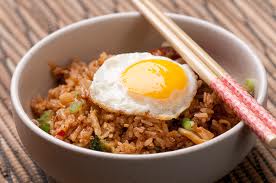



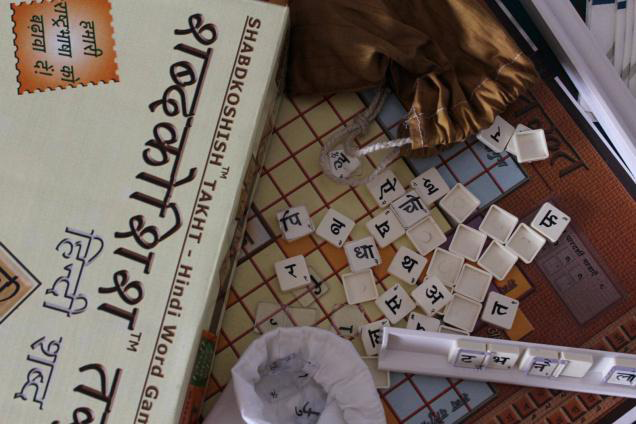

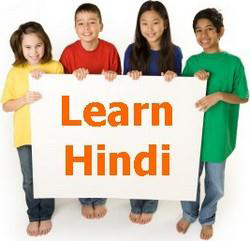
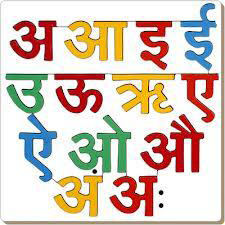
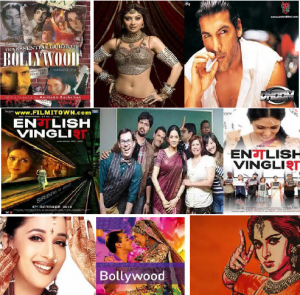

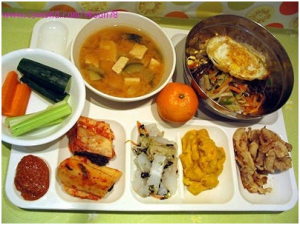



Latest Comments